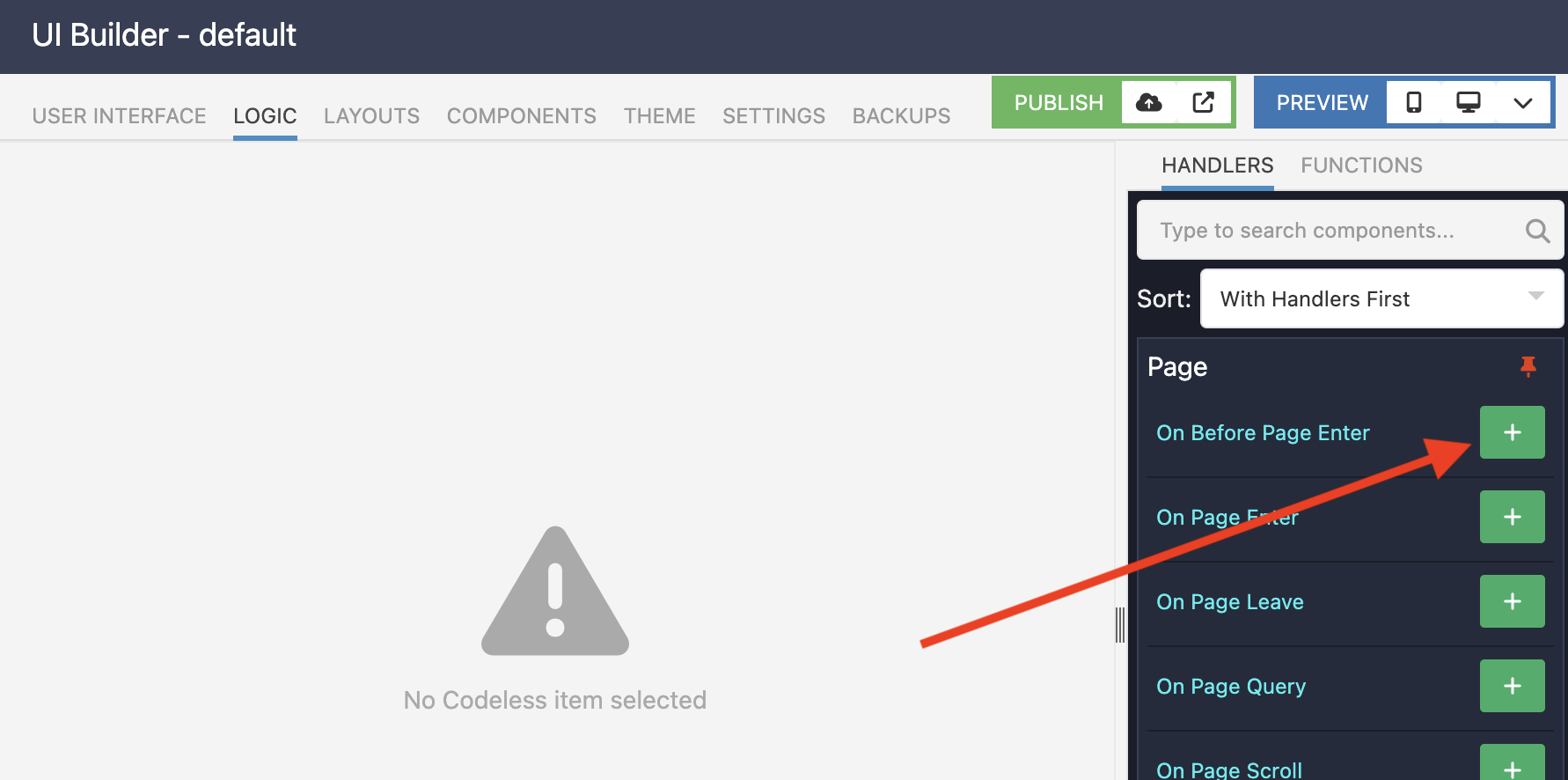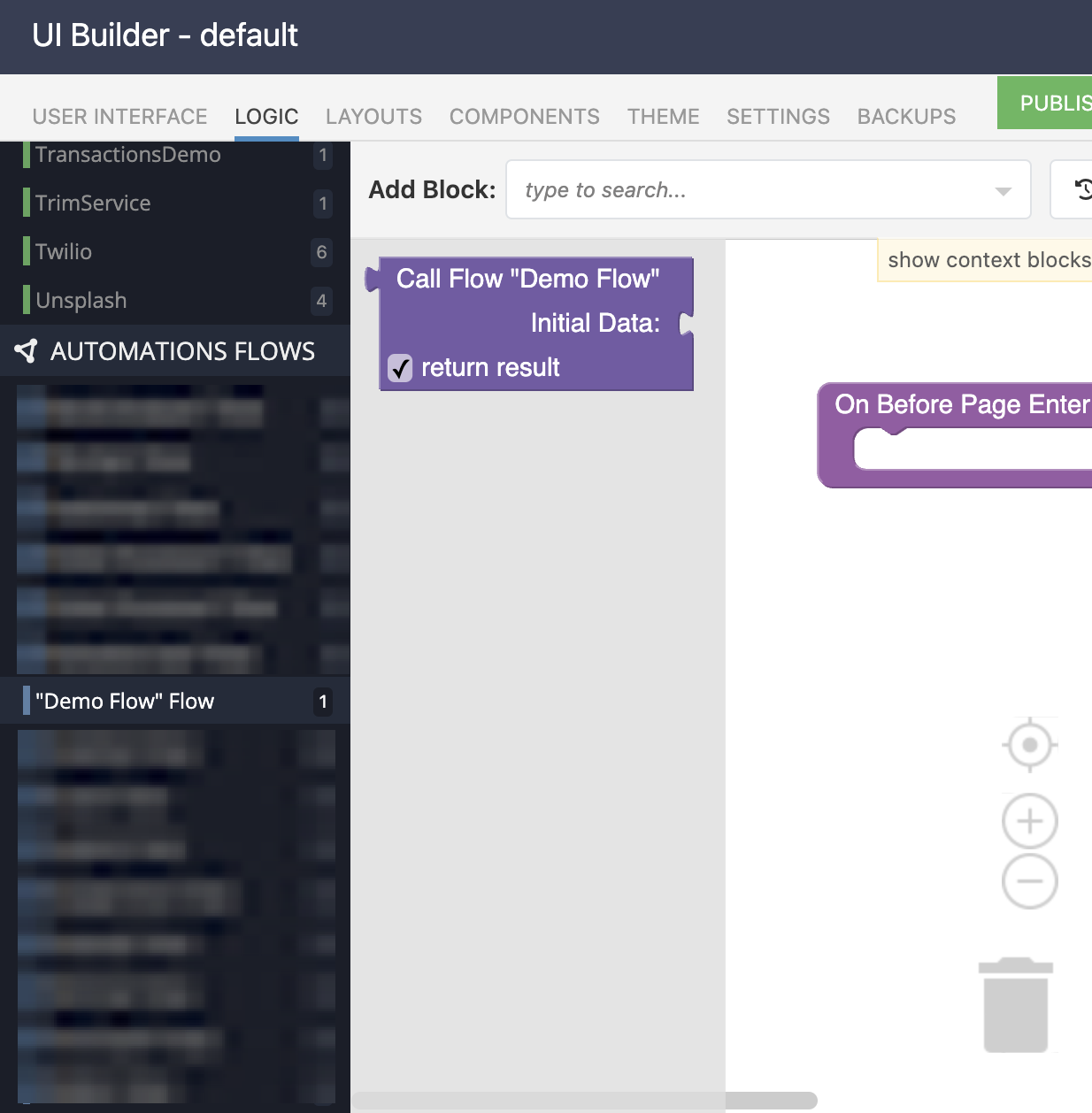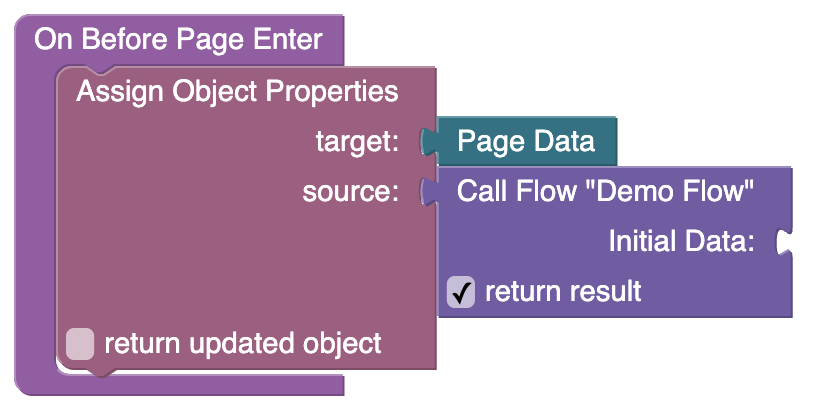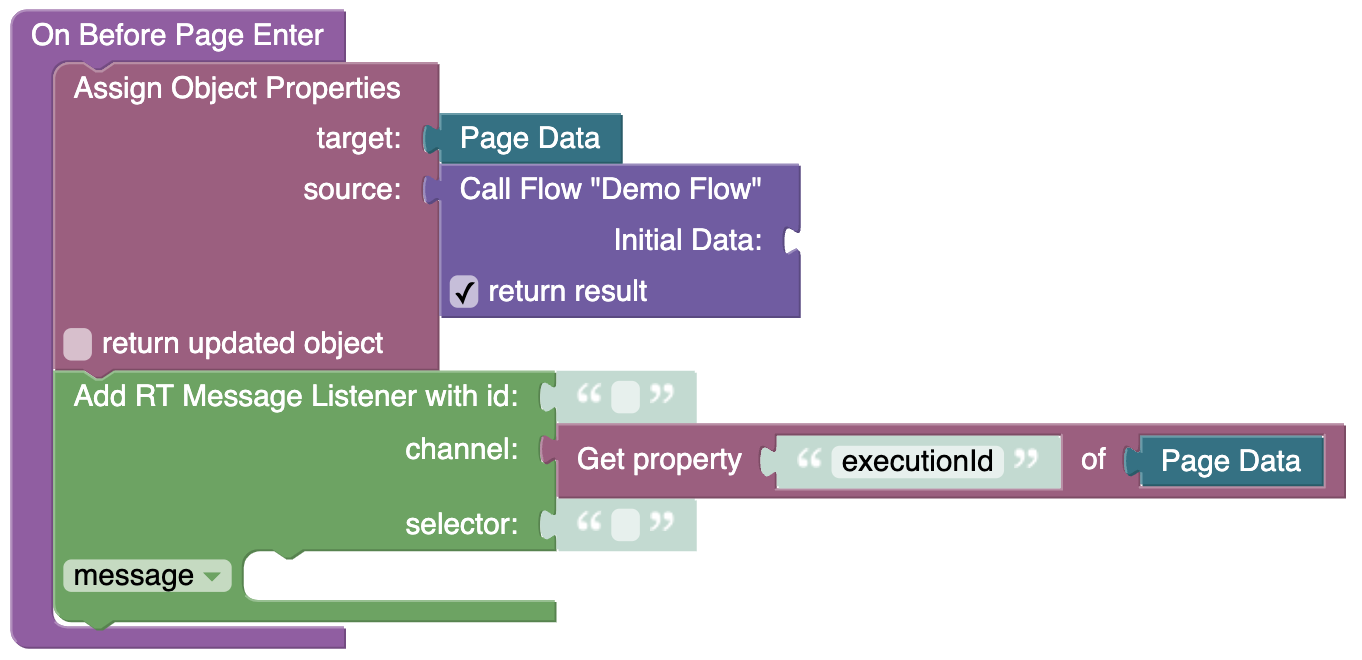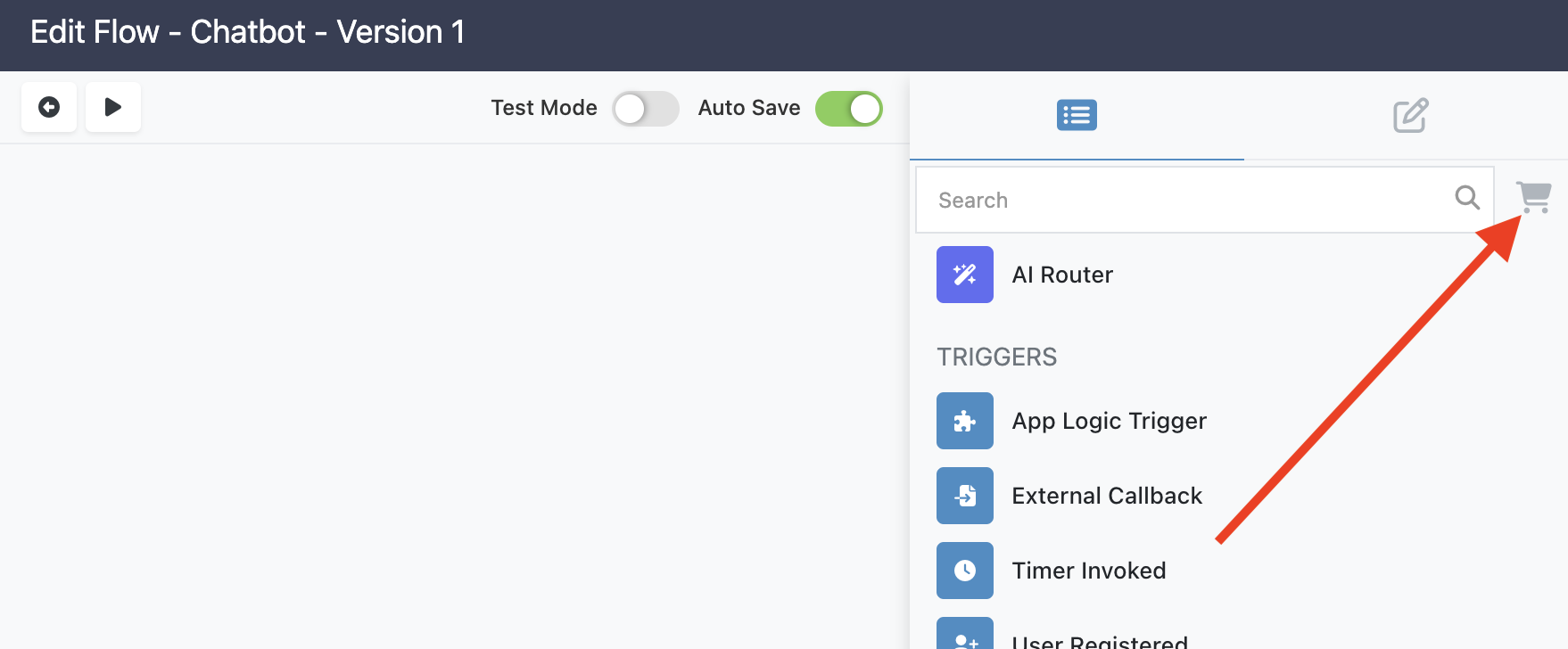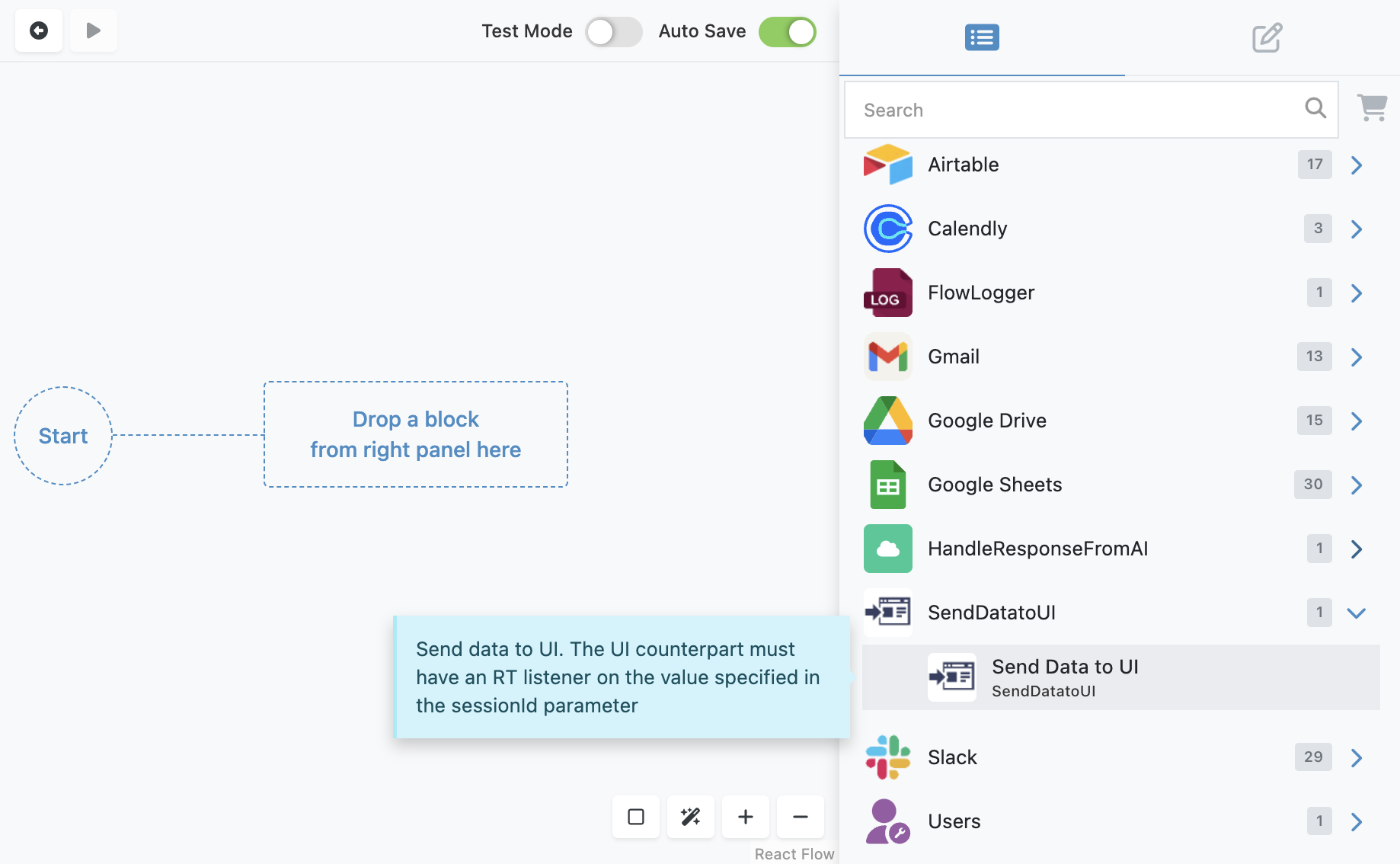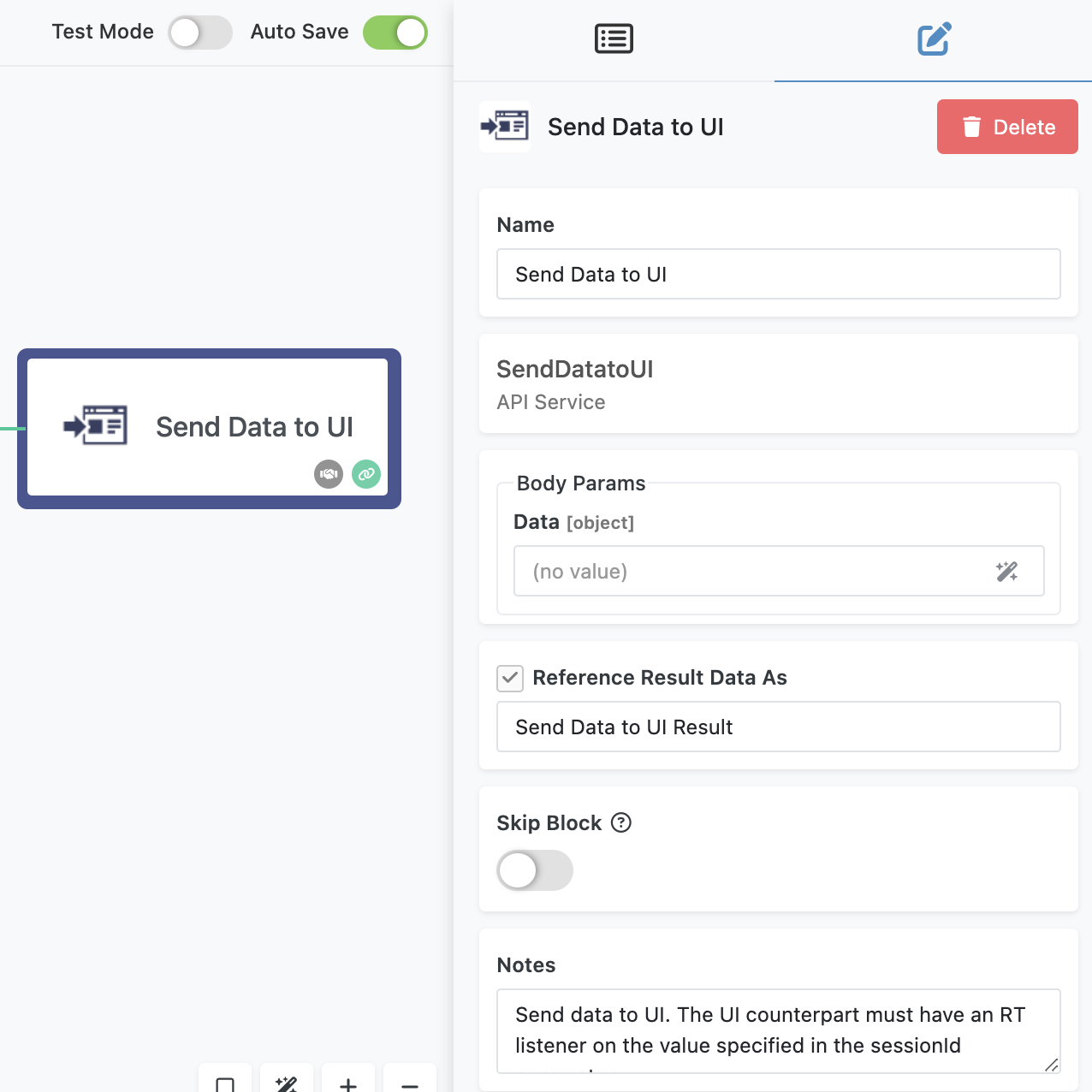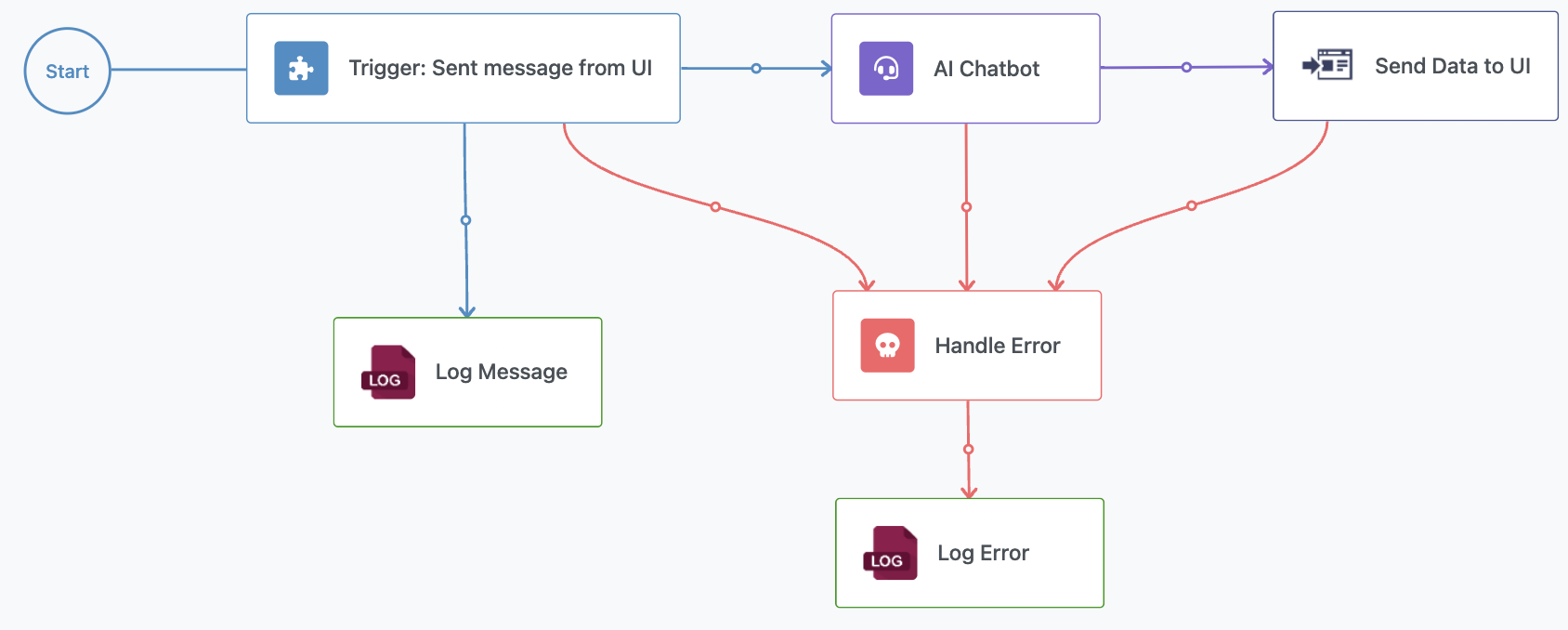Bidirectional Communication with UI¶
Bidirectional communication between a UI and a FlowRunner™ flow allows real-time interaction by leveraging Backendless' real-time messaging feature. This technique enables flows to send data back to a UI page during execution, creating dynamic, responsive experiences. While not a built-in feature, it is achievable using FlowRunner™ and Backendless UI Builder.
In this chapter, we’ll explore how to establish this connection and implement real-time updates from a flow to a UI.
Technique Overview¶
The communication setup is based on real-time messaging channels:
sequenceDiagram
participant UI as UI Page
participant Backendless as Backendless
participant Flow as FlowRunner™ Flow
UI->>Backendless: Start Flow (Call Flow)
Backendless->>Flow: Initialize Flow Instance
Flow-->>Backendless: Return Execution ID
Backendless-->>UI: Execution ID (executionId)
Note over UI: Establish Real-Time Channel<br>using executionId
UI->>Backendless: Subscribe to Real-Time Channel (executionId)
Flow->>Backendless: Send Data to Channel
Backendless-->>UI: Deliver Message to Channel
Note over UI: Process Received Data- When a UI page loads, it starts a new flow instance and establishes a real-time channel tied to the flow’s unique execution ID.
- The flow sends data back to the channel using the Send Data to UI extension from the Marketplace.
- The UI listens for messages on the same channel, processing data as it arrives.
This interaction allows a seamless exchange of data, ideal for building dynamic applications such as chat interfaces, live dashboards, or progress monitors.
Implementation Steps¶
Start the Flow from UI¶
When the UI page loads, the first step is to start the flow and use the flow identifier to create a real-time communication channel.
Navigate to the On Before Page Enter event for your UI page. This event ensures the logic runs as soon as the page starts loading:
Use a Call Flow Codeless block to initiate the flow. This block is specific to the flow you want to start and can be found in the flow’s dedicated menu in the Codeless toolbox:
Once the flow is started, its executionId (unique flow instance ID) is a part of the returned object. Merge this ID into the page’s PageData for later use:
Create a Real-Time Listener¶
With the flow running, the next step is to establish a real-time listener on the UI to receive messages from the flow. The Codeless blocks enabling real-time messaging are available under the Real Time API category. The block used in this solution is called Add RT Message Listener with id:
In your page’s logic, which can be anywhere/anytime after the Call Flow block , create a Real-Time Message Listener that listens on the channel named after the flow’s executionId.
Process Incoming Data¶
When a message is received, it will be available in the message variable. The flow’s data will be accessible in the message property, ready for use in your page.
Send Data from Flow¶
On the flow side, use the Send Data to UI extension to send data to the established real-time channel. Open the Marketplace in FlowRunner™:
Install the Send Data to UI extension:
Drag the Send Data to UI action into your flow.
Configure its Data parameter with any value available in the flow—this can include action results, variables, or transformed data.
When the flow executes this block, it sends the data to the real-time channel tied to the flow’s executionId.
Sample Flow¶
For a hands-on demonstration of the technique described in this chapter, explore the AI Chatbot sample flow. This flow, along with its corresponding sample page, offers an out-of-the-box example of bidirectional communication between FlowRunner™ and a UI.
The sample flow showcases how real-time updates from a flow to a UI can be implemented effectively, providing a clear starting point for applying this technique to your own projects.
Bidirectional communication with FlowRunner™ and Backendless UI opens up exciting possibilities for real-time, interactive applications. By combining flows, real-time messaging, and dynamic UI updates, you can build powerful systems that respond instantly to user and backend activities. Let me know if further examples or refinements are needed!
